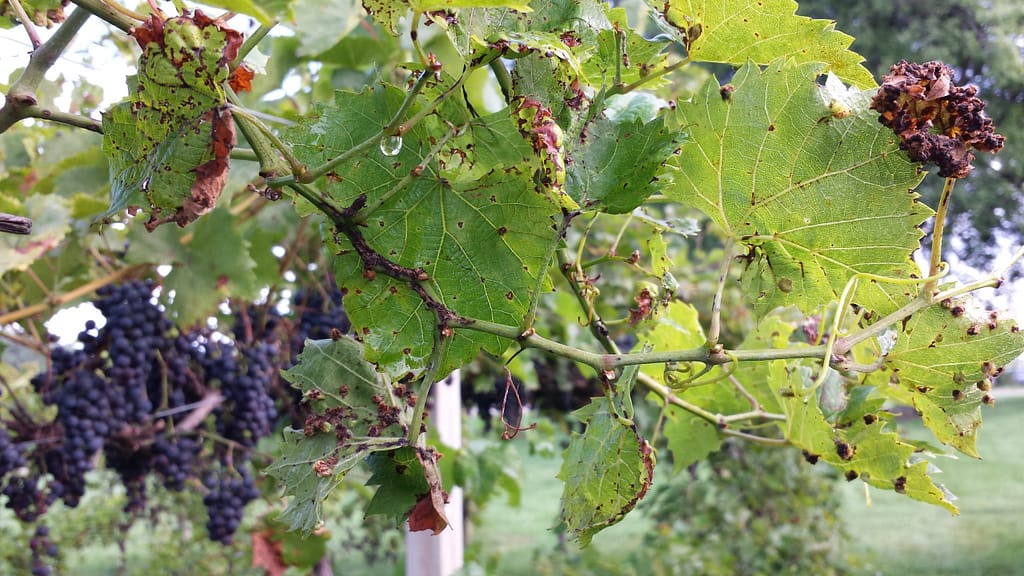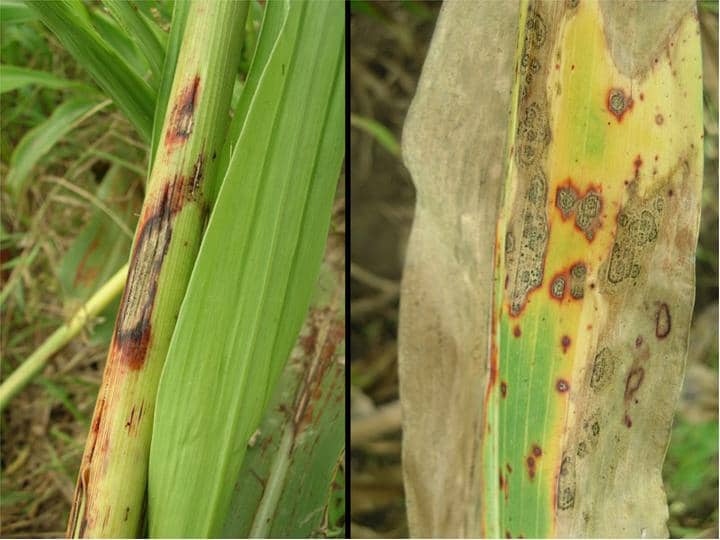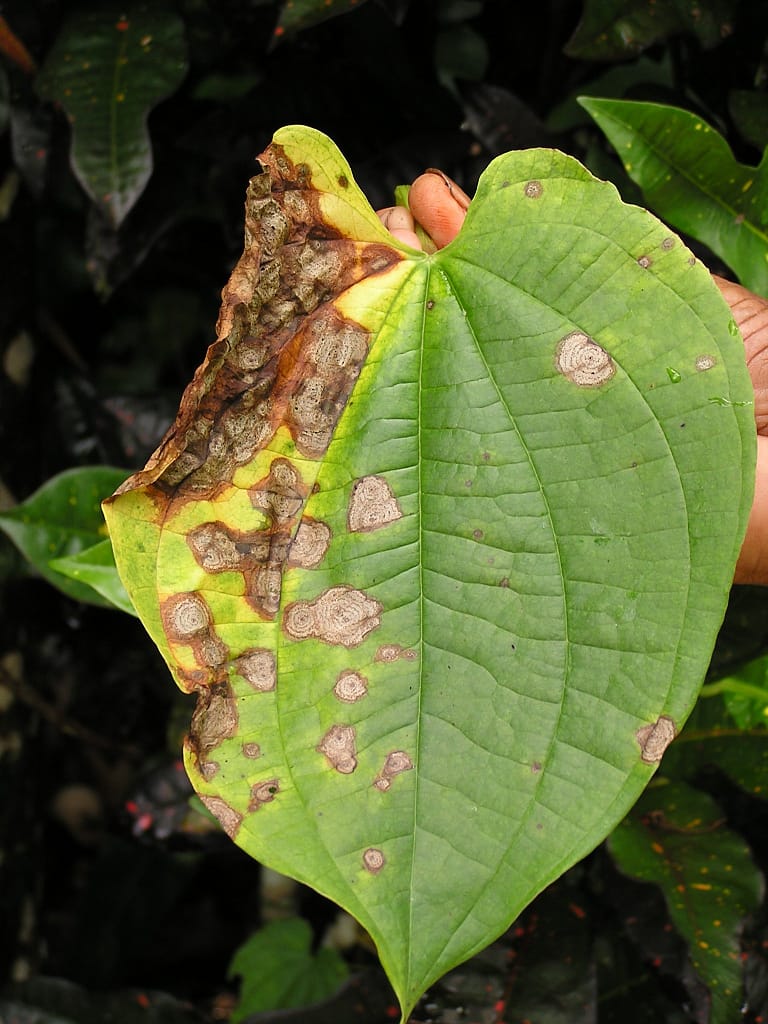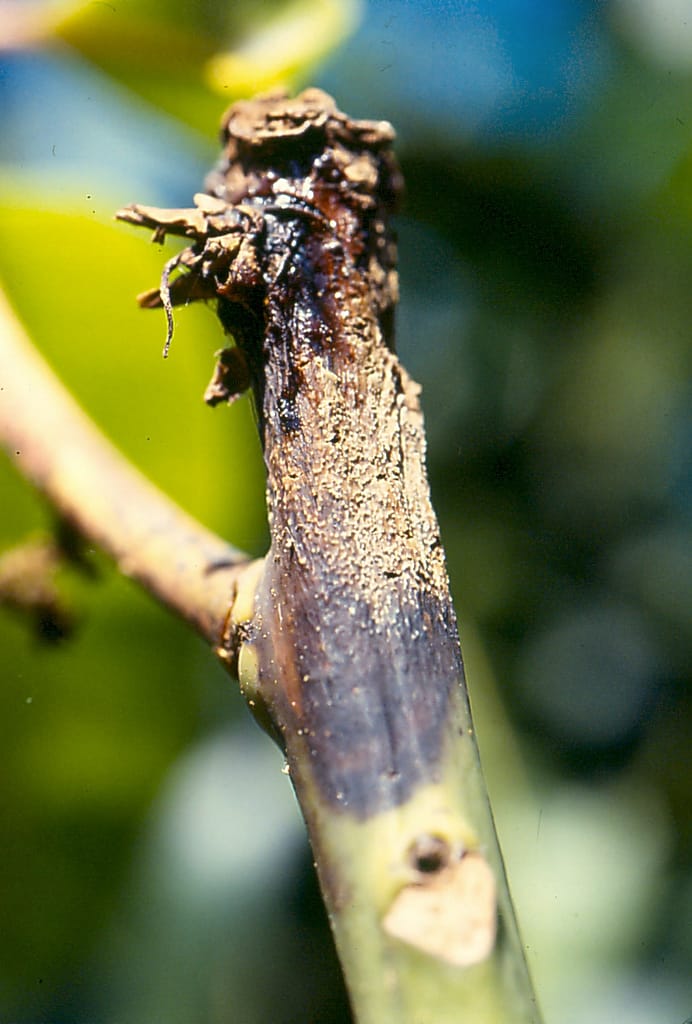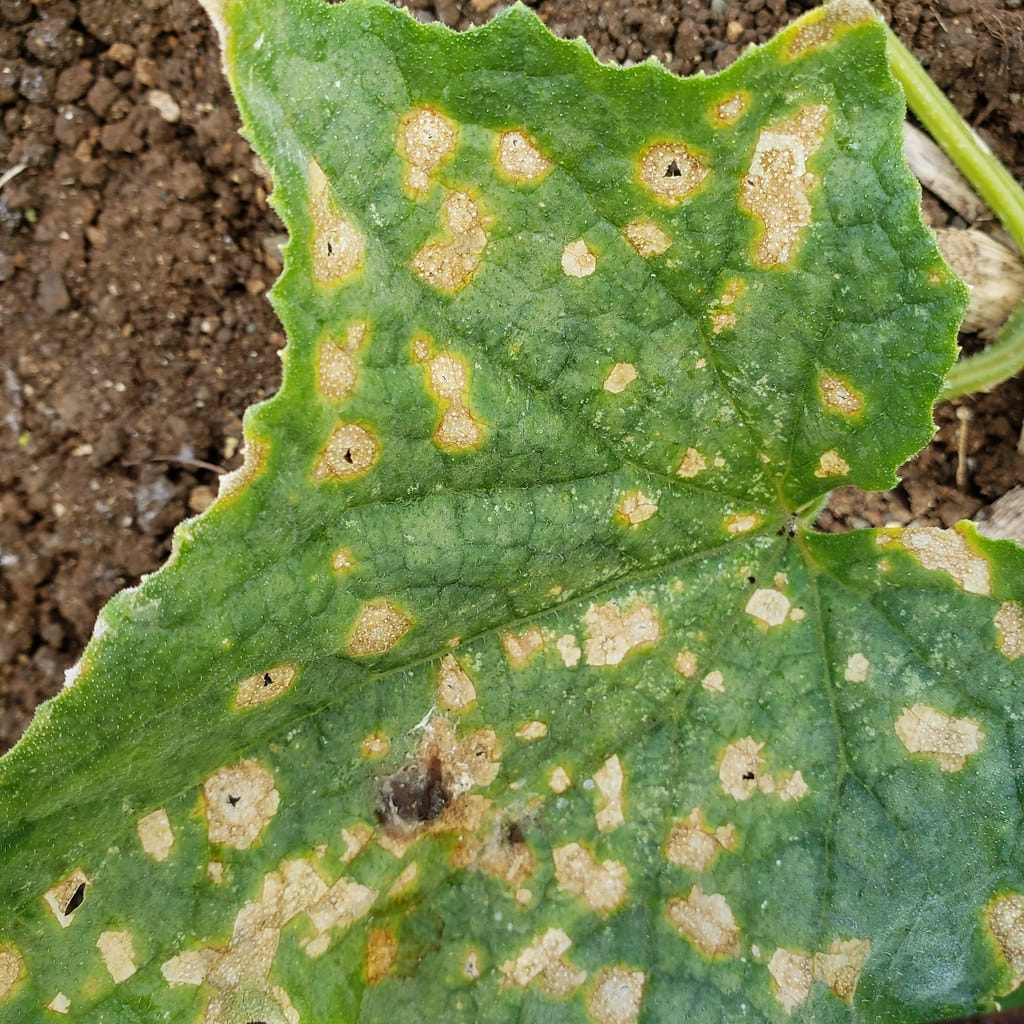What is Anthracnose?
Anthracnose, also known as twig, leaf or shoot blight, is a term used to describe a group of fungal diseases that leave dark lesions on leaves or cankers on twigs. It effects many things including deciduous trees, evergreen trees, shrubs, turf grass, and vegetables. It can be unsightly and make the novice gardener nervous, but it is not typically lethal and can be managed.
Symptoms and Identification of Anthracnose
You can generally recognize anthracnose by irregular dark lesions on leaves, twigs, flowers, and fruits. Other symptoms of anthracnose include:
- Small dark lesions on the leaf (irregular shapes on ash, maple, and willow)
- Brown dead areas along leaf veins (common on oaks and sycamore)
- Dark spots on infected twigs (common in elm, oak, and sycamore)
- Premature Defoliation (defoliated tree with only the top untouched is another indicator)
- Buds damaged with the appearance of frost damage
- Dead leaf margins and tips
- Low, inner leaves and branches tend to be more severely affected
Of the tree species that are typically susceptible to anthracnose, only Chinese Elm, Ash, Maple, Oak, and Sycamore thrive in the high desert. There are different species and cultivars that are more susceptible to anthracnose and others that are resistant. Below you’ll find which species might be a good replacement.
Susceptible to Anthracnose
- Modesto Ash
- Chinese Elm cultivars (Evergreen, True Green)
- Japanese Maple and cultivars
- Black Oak, Coast Live Oak
- American Sycamore, California Sycamore, London Plane ‘Yarwood’
Chinese Elm susceptibility to anthracnose seems to be limited to non existent in warmer interior areas of California.
Resistant to Anthracnose
- Raywood, Moraine, and Shamel (Evergreen) Ash trees
- Drake
- Silver Maple, Bigleaf Maple, and Evergreen Maple
- Blue Oak, Canyon Live Oak, Pin Oak, Valley Oak
- London Plane cultivars: ‘Bloodgood’, ‘Columbia’, and ‘Liberty’
For images of plants with anthracnose scroll to the bottom for help in identifying if it is affecting your plant. If you have photos you’d like to add to the photos below you can send them to [email protected].
Disease Cycle
The pathogens overwinter in cankers on infected branches or twigs or in fallen leaves. The spores from the fallen leaves are carried by air currents up to the twigs, branches, and leaves of the tree and begin the infection cycle. Rain drops or splashing of sprinkler or other irrigation then spread this disease to other places on the tree where it infects and further spreads throughout the tree. Favorable conditions for anthracnose include:
- Warm, moist weather
- Leaf moisture exceeds 12 hours
Management of Anthracnose
Using chemicals to deal with an infestation can only prevent further infection. The true management of anthracnose is in prevention. Planting resistant varieties would be preferred, but that might not be an option at this point. Ways anthracnose can be prevented include:
- Pruning and destroying infected branches and leaves during late fall or winter (and cleaning instruments to not spread the disease)
- Raking up leaves during the growing season and remove them
- Avoid any forms of irrigation that spray or wet the leaves
- Thinning branches during the winter can help to increase air circulation and sunlight on the leaves to dry out and prevent further anthracnose infections
Chemical Control
Chemical control has shown to be effective for ash species and particularly Modesto Ash, but have not shown efficacy on other species that grow in the high desert. Spraying is not always justified or feasible to apply yourself and will most likely require a professional’s services. Anthracnose can return year after year and this can lead to an expensive cost to spray annually if it is not managed in other ways. Due to these limiting factors of chemical control, prevention is the main goal and chemical control is typically not recommended.
Toxicity
As with almost all chemicals there is an associated toxicity rating for the active ingredients of different pesticides, fungicides, herbicides, and rodenticides. Here are a few places you can learn more about their toxicity with a table of their rating and what the rating means (first is the preferred):
http://pods.dasnr.okstate.edu/docushare/dsweb/Get/Document-3591/EPP-7457web.pdf
https://extension.psu.edu/toxicity-of-pesticides
These lists do not discuss how long these chemicals stay in the environment, how they affect other plants, or how they affect other beneficial organisms.

